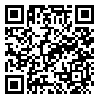Background and purpose: Stress is one of the decisive factors in infertility, which can interfere with spermatogenesis and reduce spermatozoa. Considering the immobilization stress-induced infertility disorders, this study aimed at examining the protective effect of selenium yeast cell wall (as an antioxidant) on in vitro fertilizing ability following immobilization stress in adult male rats.
Materials and methods: In an experimental study, 32 male adult rats were divided into 4 groups (n= 8 per group) including controls, stress, stress + cell wall of yeast (Saccharomyces cerevisiae) enriched with selenium (SECW) and a SECW group without inducing stress. To induce stress, the rats were immobilized in restraint device for 42 days 2hrs per day. The SECW (5×108 CFU/ml) +268µg/gr SE were orally administrated for 42 days. Afterwards, the sperm samples were collected for in-vitro fertilization (IVF). Moreover, malondialdehyde (MDA) concentration in testicular tissue was assessed in all groups.
Results: Immobilization stress significantly reduced the percentage of zygote, two-cell embryos, blastocyst, hatched embryos and increased MDA levels compared to the control group (P <0.05). In the SECW+stress all parameters of fertilization and embryos development increased significantly (P <0.05) except the percentage of zygote compared to the stress group. Administration of SECW+ stress, significantly decreased the level of MDA tissue compared to the stress group (P <0.05).
Conclusion: Immobilization stress was proved to have harmful effects on fertility, therefore, SECW that has antioxidant compounds could inhibit oxygen free radicals thereby, increasing fertilization and fertility potential.
| Rights and permissions | |
 |
This work is licensed under a Creative Commons Attribution-NonCommercial 4.0 International License. |


